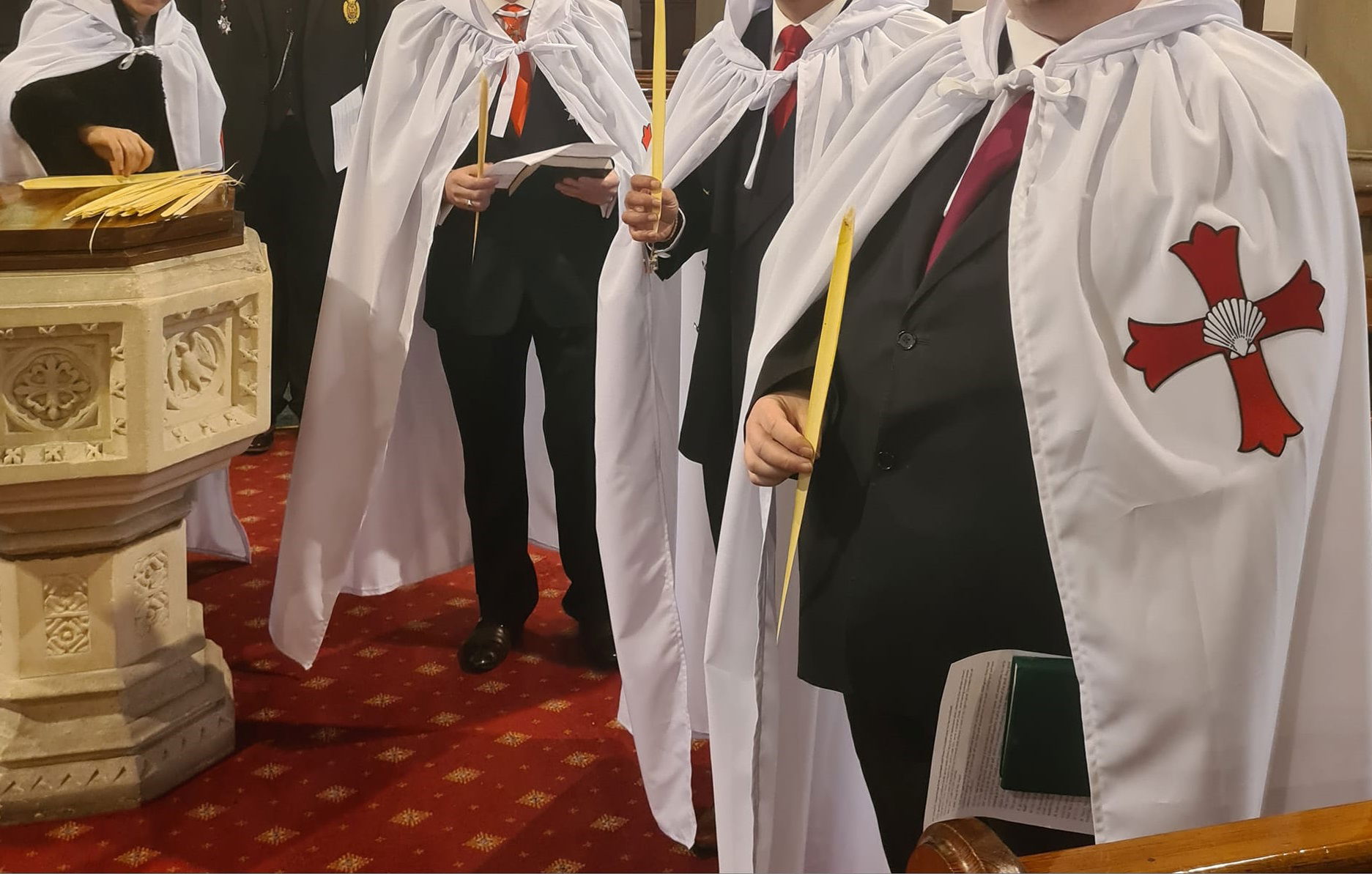From Battlefield to Humanity: The Cross on Knightly Mantles
Throughout the Middle Ages, the sight of a knight riding into battle with a cross emblazoned upon his cloak, surcoat or shield was a powerful image that united faith, identity, and purpose. The cross, simple yet profound in form, became a defining emblem of the Christian knight, symbolising not only martial allegiance but also deep spiritual commitment.
The origins of the cross as a knightly insignia are closely tied to the Crusades. When Pope Urban II called upon Christian warriors in 1095 to reclaim the Holy Land, those who took the vow of the cross - the crucesignati - were marked with a cloth cross sewn onto their garments. This symbol set them apart as soldiers of Christ, fighting not merely for earthly reward but for eternal salvation. In many cases, the colour and style of the cross varied between knightly orders: the red cross of the Templars, the black cross of the Teutonic Knights, or the white maltese cross of the Hospitallers, each carrying its own spiritual and institutional resonance.
Yet the cross bore a paradoxical history long before it became a martial emblem. In the Roman world, the cross was a cruel instrument of execution, a mark of shame and humiliation reserved for criminals and outcasts. It was through the death of Jesus Christ upon the cross that this instrument of torture was transformed into a symbol of redemption and hope. The very object once associated with suffering and defeat became, in Christian thought, the gateway to eternal life. For the medieval knight, to wear the cross was therefore to embrace both sacrifice and promise: a reminder of Christ’s suffering, and a sign of the salvation offered through Him.
On the battlefield, the cross served not only as a rallying point but also as a declaration of intent. Cloaked in this sacred sign, knights believed themselves to be engaged in a holy struggle, their earthly battles reflecting the greater spiritual war between good and evil. The cross united warriors from diverse lands under a single divine mission, transcending language and culture in the shared conviction that they were instruments of God’s will.
Over the centuries, however, the meaning of the cross on a mantle underwent a profound transformation. In modern times, it is no longer a symbol of conquest but rather one of charity, mercy, and compassion towards those in need. Humanitarian orders have carried forward this legacy, shifting the focus from warfare to care for the sick, the poor, and the vulnerable. The cross that once led knights into battle now inspires service and benevolence.
The most universal modern expression of this symbolism is the Red Cross. Established in the nineteenth century by Henry Dunant, the International Red Cross adopted the emblem of the red cross on a white background as a neutral and protective sign in times of conflict. Today, it represents the preservation of human life, impartial medical aid, and hope in the face of suffering. What once was a symbol of sacrifice on the battlefield has become the global emblem of healing and salvation.
The cross upon knightly mantles was more than an ornament; it was a symbol that bridged history, faith, and identity. Born from the brutal realities of Roman execution, reimagined through the sacrifice of Christ, and adopted by medieval orders as a sign of courage and sanctity, the cross became the most enduring emblem of knighthood. Its later transformation into a symbol of charity and universal humanitarian aid, culminating in the emblem of the Red Cross, testifies to its timeless power: from suffering to redemption, from war to compassion, from death to the saving of lives.
